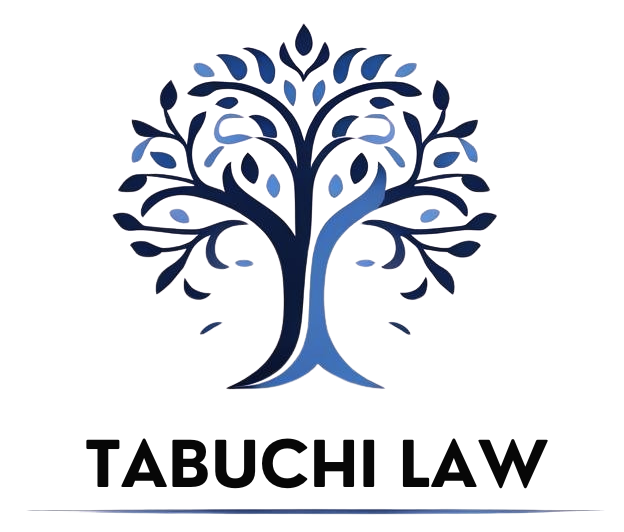You've Got This! Easy Steps to Navigate Trust Termination Today

Key Takeaways:
- Dissolving a family trust in Canada involves a legal process that must be followed to ensure the proper termination of the trust.
- The trust termination process includes reviewing the trust deed, distributing the trust assets, and obtaining a clearance certificate from the Canada Revenue Agency (CRA).
- Closing a trust can have tax implications, and it's important to understand the potential tax consequences before proceeding.
- Trustees have specific responsibilities during the trust closure process, including ensuring the proper distribution of assets and maintaining records.
- Obtaining a CRA clearance certificate is a crucial step in the trust termination process, as it confirms that all outstanding taxes have been paid.
Family Trust Closure: Your Guide to Legal Termination in Canada
Navigating the legal complexities of closing a family trust in Ontario can be a daunting task. This comprehensive guide will walk you through the step-by-step process, from understanding the tax implications to properly distributing trust assets. Whether you're a trustee or a beneficiary, this article will equip you with the knowledge to ensure a smooth and compliant trust termination.
- What is a Family Trust?
- Reasons to Close a Family Trust
- The Trust Termination Process
- Tax Implications of Closing a Trust
- Distributing Trust Assets
- Trustee Responsibilities in Trust Closure
- Obtaining CRA Clearance Certificate
- FAQs
What is a Family Trust?
A family trust is a legal arrangement where a trustee holds and manages assets on behalf of the trust's beneficiaries, typically family members. This type of trust is often used for estate planning, tax optimization, and asset protection purposes. In Ontario, family trusts are governed by the Trustee Act and the Income Tax Act, among other relevant legislation.
Reasons to Close a Family Trust
There are several reasons why you might consider closing a family trust in Ontario. Perhaps the trust has fulfilled its original purpose, the beneficiaries' needs have changed, or the administrative costs have become too burdensome. Whatever the reason, it's important to follow the proper legal steps to ensure a smooth and compliant trust termination.
The Trust Termination Process
Dissolving a family trust in Ontario typically involves several key steps. First, the trustee must review the trust deed or declaration to understand the specific requirements for termination. This may include obtaining consent from all beneficiaries or following a specific process outlined in the trust document.
Next, the trustee must prepare a final accounting of the trust's assets and liabilities, including any outstanding debts or taxes owed. This information will be crucial for the distribution of the remaining trust assets.
Well, here's the thing - the trustee must also notify all beneficiaries of the trust's impending closure and provide them with the final accounting. This ensures transparency and allows beneficiaries to raise any concerns or objections before the trust is terminated.
Tax Implications of Closing a Trust
Closing a family trust in Ontario can have significant tax implications, so it's essential to understand the potential consequences. The trust itself may be subject to capital gains taxes on any assets that have appreciated in value, and the beneficiaries may also be responsible for taxes on the distributions they receive.
It's crucial to consult with a qualified tax professional, such as an accountant or estate planning lawyer, to ensure that all relevant taxes are properly calculated and paid. Failure to do so could result in penalties or other legal issues down the line.
Distributing Trust Assets
Once the final accounting has been completed and any outstanding taxes or debts have been paid, the trustee can begin the process of distributing the remaining trust assets to the beneficiaries. This may involve liquidating assets, transferring ownership, or distributing the assets in-kind.
It's important to note that the distribution of trust assets must be done in accordance with the terms of the trust deed or declaration, as well as any applicable laws and regulations. Failure to do so could result in legal disputes or even personal liability for the trustee.
Trustee Responsibilities in Trust Closure
As the trustee, you have a fiduciary duty to act in the best interests of the trust and its beneficiaries. This means that you must exercise due diligence and care in the trust termination process. Some of your key responsibilities include:
- Reviewing the trust deed or declaration to understand the specific requirements for closure
- Preparing a final accounting of the trust's assets and liabilities
- Notifying all beneficiaries of the trust's impending closure and providing them with the final accounting
- Ensuring that all relevant taxes are properly calculated and paid
- Distributing the remaining trust assets in accordance with the trust deed and applicable laws
- Obtaining a clearance certificate from the Canada Revenue Agency (CRA) to confirm that all tax obligations have been met
Obtaining CRA Clearance Certificate
When closing a family trust in Ontario, it's essential to obtain a clearance certificate from the Canada Revenue Agency (CRA). This document confirms that the trust has met all of its tax obligations and can be legally terminated.
To obtain the CRA clearance certificate, the trustee must file a final tax return for the trust and provide the CRA with a statement of the trust's assets and liabilities. The CRA will then review the information and issue the clearance certificate, which the trustee can use to formally close the trust.
FAQs
How long does the trust termination process typically take?
The timeline for closing a family trust in Ontario can vary, depending on the complexity of the trust and the specific requirements outlined in the trust deed. In general, the process can take several months to a year or more, especially if there are complex tax or asset distribution issues to resolve.
Can a trust be closed before it has fulfilled its original purpose?
Yes, it is possible to close a family trust in Ontario before it has fulfilled its original purpose, but this will depend on the terms of the trust deed and the consent of the beneficiaries. In some cases, the trust may be able to be modified or amended rather than closed entirely.
What happens if a trustee fails to properly distribute the trust assets?
If a trustee fails to properly distribute the trust assets during the termination process, they may be held personally liable for any resulting damages or losses. Trustees have a fiduciary duty to act in the best interests of the trust and its beneficiaries, and failure to do so can have serious legal consequences.
Can a trust be closed if there are outstanding debts or liabilities?
Yes, a family trust in Ontario can be closed even if there are outstanding debts or liabilities, but the trustee must ensure that these obligations are properly addressed before the trust is terminated. This may involve using trust assets to pay off debts, negotiating with creditors, or transferring liabilities to another entity.
What happens if a beneficiary objects to the trust termination?
If a beneficiary objects to the termination of a family trust in Ontario, the trustee must carefully consider the concerns and attempt to resolve them. In some cases, the trust may need to be modified or amended rather than closed entirely, or the trustee may need to seek court approval to proceed with the termination.



